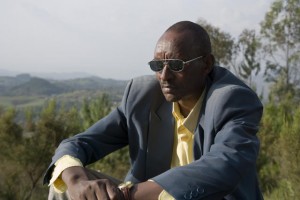
On the journey back from my visit to Cyangugu, we took the stunning (but bumpy) Lake Kivu road to return to Kigali via Bisesero.
Bisesero is the most significant site of resistance during the genocide. It is a place of breathtaking beauty, but with a tragic story.

The community of Tutsis in the region numbered over 100,000 before the genocide. At the outbreak of killings in April 1994, many fled to the hill of Bisesero that historically had been a point of defence during previous waves of violence.
By the end of June 1994, there were around 25,000 Tutsis that had held out against the interahamwe (Hutu extremists), with just spears and stones. However, on June 27th the region became part of Zone Turquoise, the area protected by the French Army to allow the exodus of 2 million Hutus that fled to DRC, fearing reprisals from the liberating RPF.
Those reprisals never did eventuate, and this misled strategy of the French resulted in an opposite consequence – providing cover for the fleeing Hutu extremists to continue their systematic killing of Tutsis.
Simeon, one of the survivors, recounts his experience here:
As a result only 1,300 from a community which numbered over 100,000 Tutsis survived at Bisesero – many killed in the final two weeks of the genocide, as a direct result of the misled French policy.
SURF’s focus now will be to try provide support to those survivors. Few have received any support over the past ten years. To date, AVEGA Western Region have not had the capacity to reach such isolated areas but as part of the new Comic Relief grant we are working to strengthen their capacity to extend their reach to new communities of survivors, including those in Bisesero.
If you would like to support this work, please do consider donating here:

Please mark your donation Bisesero.
Following consultation, our plan over the months ahead is to support an agricultural project of an initial group of 100 survivors, providing seeds, tools and land to enable them to farm Irish potatoes.
We hope in future to report back on the progress of that project.
